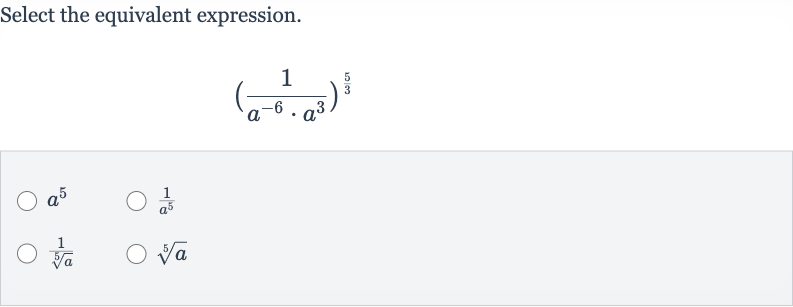AI tutor
Full solution
Q. Select the equivalent expression.
- Simplify inside parentheses: We start by simplifying the expression inside the parentheses before applying the exponent. simplifies to because when you multiply powers with the same base, you add the exponents.
- Simplify exponent inside parentheses: Now we simplify the exponent inside the parentheses. simplifies to because equals .
- Apply exponent to expression: Next, we apply the exponent to the expression . simplifies to because when you raise a power to a power, you multiply the exponents.
- Simplify exponent of a: We simplify the exponent of a. simplifies to because times equals .
- Simplify numerator: Now we simplify the numerator . Any number to the power of any real number is that number itself, so is just .
- Final expression: We are left with the expression . Since raised to any power is still , and a negative exponent means the reciprocal, we can rewrite as .
More problems from Multiplication with rational exponents
QuestionGet tutor help
QuestionGet tutor help
QuestionGet tutor help
QuestionGet tutor help
QuestionGet tutor help

